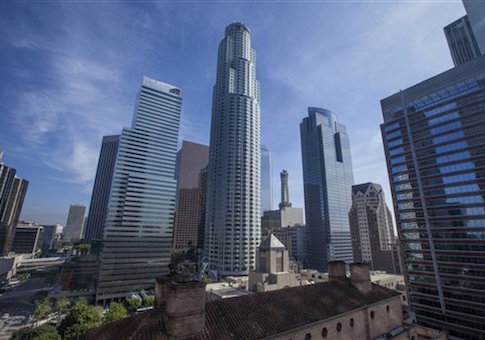Tens of thousands of workers in California have been impacted by permanent or temporary layoffs in the past six months alone, and despite the governor’s economic development efforts more than 1 million Californians remain unemployed.
A report released Wednesday by the rating agency Standard and Poor’s indicated the state’s finances were balanced, but questioned how sustainable the state’s recovery will be.
"California's finances are roaring back," the report stated. "History would suggest, however, that any fiscal renaissance will be temporary—the result of several favorable developments occurring simultaneously."
The report indicates the state’s fiscal recovery was due to lowering its spending, not in earning higher revenues.
"A cruder characterization would be that the state is only better off now because it obtained voter consent to raise taxes in the midst of a long-lived bull market for equities. Once the tax increases expire, or if market sentiment turns bearish, the skeptic might assert that the state—along with its credit rating—is condemned to go off a fiscal cliff."
The Golden State’s employment picture has improved and its unemployment rate is headed in the right direction. But at 7 percent, it is still higher than the national average, according to the U.S. Bureau of Labor Statistics.
The state’s U6, or total unemployment rate, is 15.8, the second highest in the country behind Nevada. U6 is an alternative measure of unemployment, which includes those who have given up looking for work and those who have taken part-time jobs even though they desire full-time employment.
According to the California Employment Development Department, 1.5 million jobs have been created in the state since its recovery from the Great Recession began in February 2010. While an impressive number, 1.33 million Californians are still unemployed.
The state continues to lose jobs, according to a review of recent WARN notices by the Washington Free Beacon. In the past six months alone, 327 companies have announced temporary or permanent layoffs for the six-month period ending mid-January.
Over 30,000 employees have been affected by these announcements.
These numbers do not include the recent announcements made by DreamWorks Studios, which plans to slash 15 percent of its workforce, or eBay, which is cutting 7 percent, or 2,400, of its workforce.
The governor’s office has touted recent job creation successes. Fifty-six companies were given $31 million in tax credits by the state to expand their workforces. A review of the agreements shows some companies are creating two jobs over a three-year period and receiving $24,000 in tax credits.
Other companies are creating more jobs and receiving more in tax credits. Niagara Bottling, for one, is receiving $2.7 million to increase its workforce from 2015 to 2018 by 409 workers. The minimum annual salary of these workers is $22,880, according to the company’s signed agreement.
Another recent announcement is Macy’s decision to build a distribution center, which would create a few hundred jobs. But the company’s location in Sacramento—at a site left vacant by Campbell’s Soup—is a reminder of the 700 jobs lost in recent years.
The state’s manufacturing industry also continues to lag behind the rest of the country.
"California is clearly trending behind the rest of the country," said Gino DiCaro, vice president of communications of the California Manufacturers & Technology Association.
Manufacturing has grown by more than 6 percent in the country since 2012, DiCaro said. But California has seen less than 1 percent growth.
DiCaro cited a "host" of reasons the state is not attracting manufacturing jobs. One is energy costs.
"Our electricity costs are 80 percent higher than the rest of the country," DiCaro said.
Other factors include the state’s high corporate tax, high worker’s comp premiums, and long delays in its permitting process, DiCaro said.
The governor’s office is doing what they can to attract new jobs, according to DiCaro, but "eventually, you need to start looking at the overall picture."
"At some point, the burden becomes too large to make long-term decisions in the state," said DiCaro.
The middle class is also leaving California, according to several reports. California’s middle class household income shrank 6.9 percent between 2009 and 2013.
DiCaro said a review of salaries before the recession showed an average salary of $74,000 per job. New jobs being created are paying an average $52,900.
Still another report cited the middle class exodus from the state is due to high home prices and the high cost of living.
